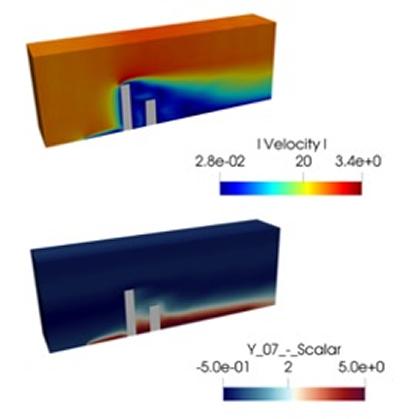Research project: High Fidelity Simulation of Atmospheric Dispersion
The research focuses on high-fidelity dispersion modelling within atmospheric flows in cases such as urban environments. The project is in partnership with Dstl.
The research focuses on high-fidelity dispersion modelling within atmospheric flows in cases such as urban environments. The project is in partnership with Dstl.
Prediction of chemical and biological hazards have a substantial benefit to public safety. These hazards can come from many sources. Examples could be a chemical or biological agent released into crowded public spaces. In scenarios such as these hazard prediction within minutes or hours can become very useful. The current simple methods used by the industry have their weaknesses when trying to produce realistic dispersion cases.
To get around this, more robust methods such as CFD with RANS and LES to capture the full dynamics of problem are nowadays employed. An alternative to using traditional large run-time CFD schemes is the lattice Boltzmann method (LBM). LBMs have many advantages to traditional CFD. One of which is that it is readily suited for parallel processing, thus, allowing for quick results. These parallel processing can be done on graphic processing units (GPUs).
The focus of this research is to implement an LBM code on GPUs for dispersion prediction which fully incorporates atmospheric and turbulent behaviour in complex environments. The dispersion modelling is done with passive scalar assumptions.
